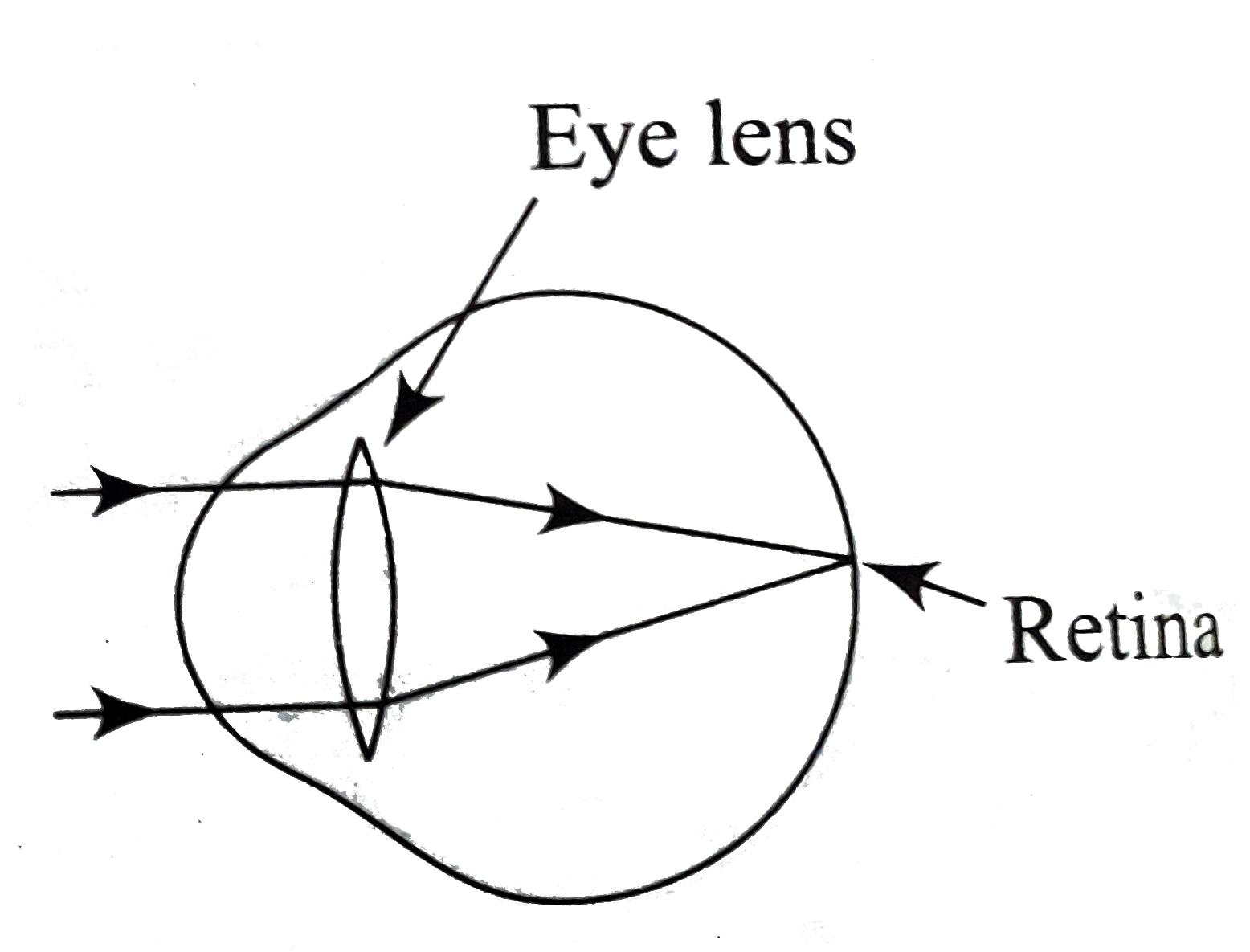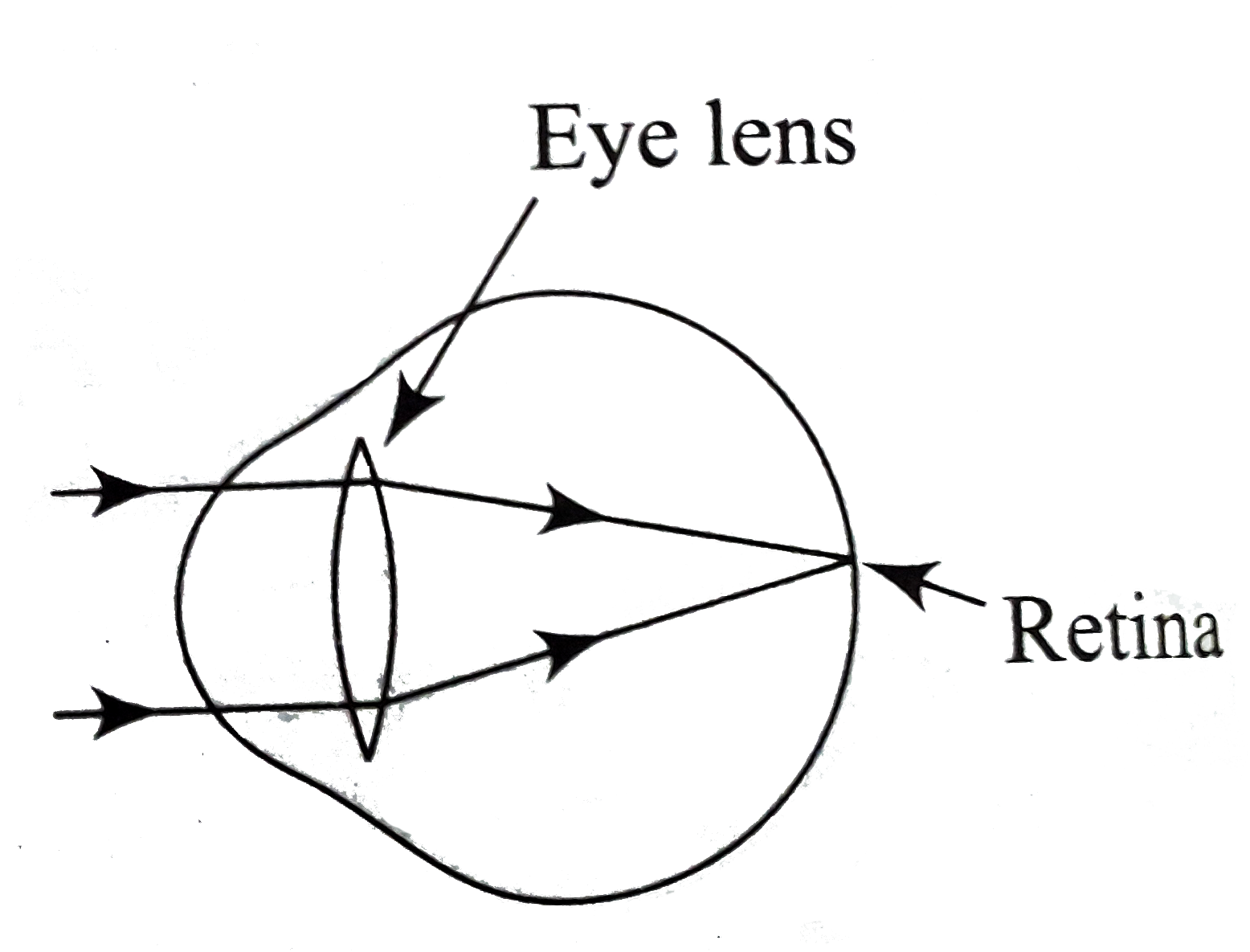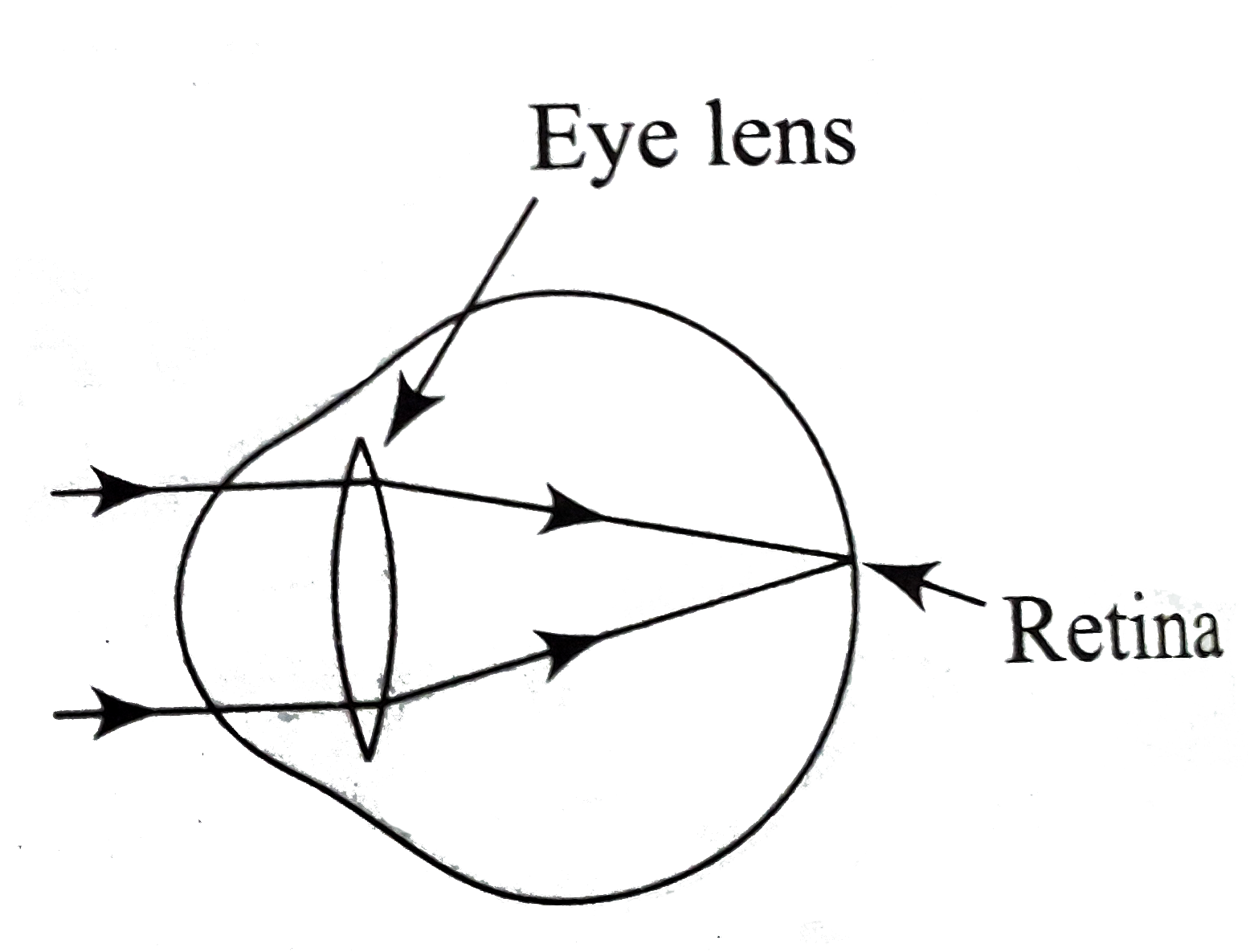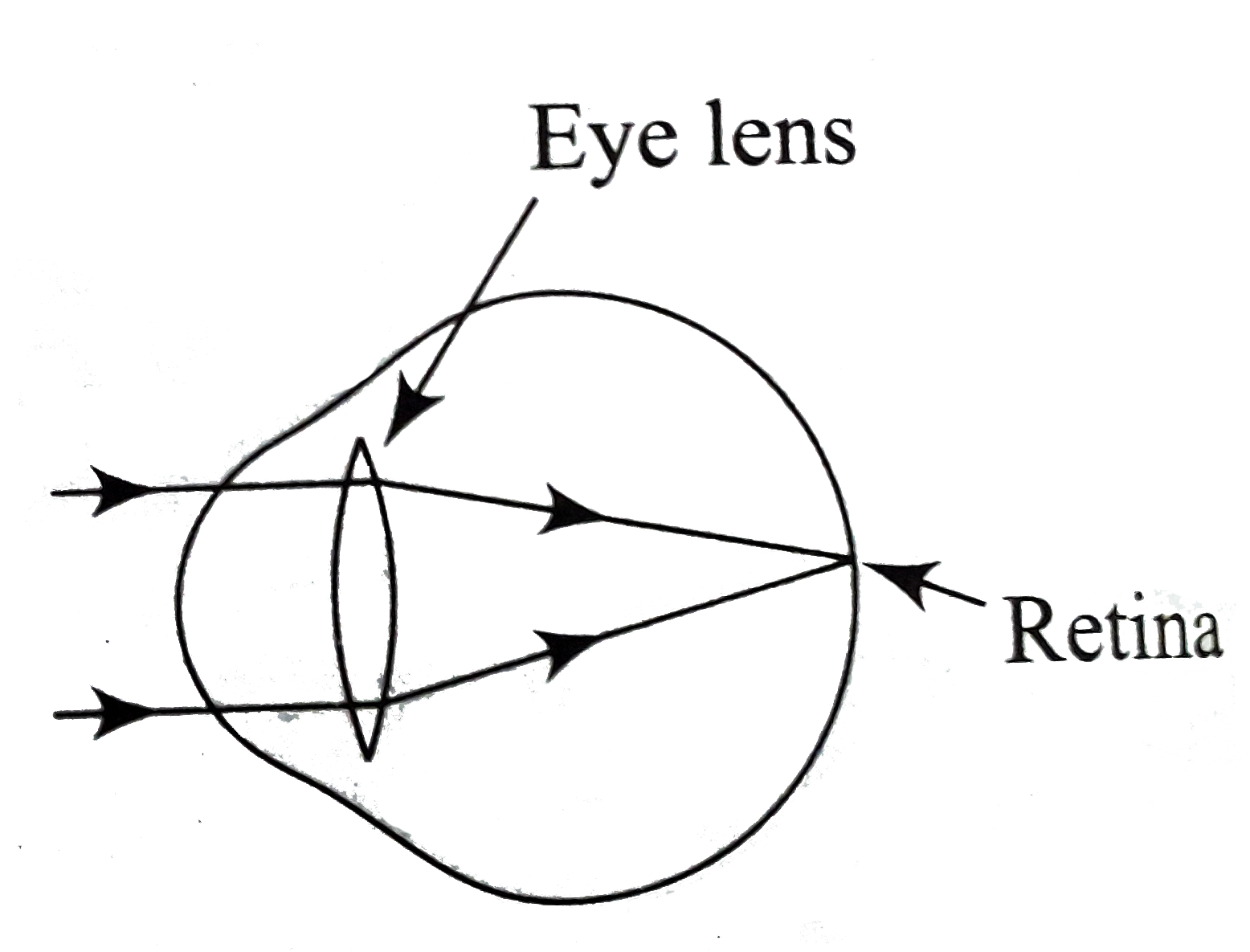A : 3-D movies are produced by pojecting two images onto a screen, with polarizing dissections that are 90∘ relative to one another.
R : When your eyes view 3D wearing 3D glasses, your right eye sees one view and left eye sees the other view, these views combines in the brain and produce 3D effect.
Both A and R are true and R is the correct explanation of A
Both A and R are true and R is not the correct explanation of A
A is true and R is false
Both A and R are false
The correct Answer is:B
To analyze the given assertion (A) and reason (R) regarding 3D movies, we can break down the explanation step by step.
Step 1: Understanding the Assertion (A)
The assertion states that "3-D movies are produced by projecting two images onto a screen, with polarizing dissections that are 90 degrees relative to one another."
- Explanation: In 3D movies, two separate images are projected simultaneously. Each image is polarized in a different direction (90 degrees apart). This is essential because it allows each eye to receive a different image, creating a sense of depth.
Step 2: Understanding the Reason (R)
The reason states that "When your eyes view 3D wearing 3D glasses, your right eye sees one view and left eye sees the other view; these views combine in the brain and produce a 3D effect."
- Explanation: The 3D glasses have polarizing filters that correspond to the polarization of the images projected. The right lens allows only the image intended for the right eye to pass through, and similarly for the left lens. When the brain receives these two slightly different images, it processes them together, resulting in the perception of depth and a 3D effect.
Step 3: Conclusion
Both the assertion and the reason are true, and the reason correctly explains the assertion. Therefore, we can conclude that the correct answer to the question is that both A and R are true, and R is the correct explanation of A.
Final Answer:
Both assertion (A) and reason (R) are true, and R is the correct explanation of A.
---
The assertion states that "3-D movies are produced by projecting two images onto a screen, with polarizing dissections that are 90 degrees relative to one another."
The reason states that "When your eyes view 3D wearing 3D glasses, your right eye sees one view and left eye sees the other view; these views combine in the brain and produce a 3D effect."
Both the assertion and the reason are true, and the reason correctly explains the assertion. Therefore, we can conclude that the correct answer to the question is that both A and R are true, and R is the correct explanation of A.
Both assertion (A) and reason (R) are true, and R is the correct explanation of A.
Topper's Solved these Questions
- WAVES OPTICSBOOK - AAKASH SERIESCHAPTER - WAVES OPTICSEXERCISE - EXERCISE -II (INTERFERENCE)
26 Videos
- WAVES OPTICSBOOK - AAKASH SERIESCHAPTER - WAVES OPTICSEXERCISE - EXERCISE -II (DIFFRACTION)
17 Videos
- WAVES OPTICSBOOK - AAKASH SERIESCHAPTER - WAVES OPTICSEXERCISE - EXERCISE -IA (ASCENDING AND DSCENDING ORDER TYPE QUESTIONS)
6 Videos
- WAVESBOOK - AAKASH SERIESCHAPTER - WAVESEXERCISE - EXERCISE-III (Doppler effect :)
15 Videos
Similar Questions
Read the following paragraph and answer the questions given below ,
Stable equilibrium is of various types . Mechanical equilibrium is achieved when all particles are at rest and total potential energy of the system is minimum . At any stage where particles are at rest but the system is not at stable equilibrium as it can reduce its potential energy by reverting to another position, is called metastable equilibrium . Thermal equilibrium is result from the absence of temperature gradients in the system. Chemical equilibrium is obtained when no further reaction occurs between reacting substances, i.e forward and reverse rates of reaction are equal. When steam with solid iron at high temperature Fe3O4(s) and hydrogen gas are produced . But the reaction never goes to completion. This is because as the products are formed the reaction proceeds in reverse direction and when rate of reverse reaction is equal to rate of forward reaction , the concentration of reactants and products become constant and equilibrium is reached.
When two reactants (A) and (B) are mixed to give products (C) and (D) the concentration quotient (Q) at initial stage of the reaction
View SolutionThe ciliary muscles of eye control the curvature of the lens in the eye and hence can alter the effective focal length of the system. When the muscles are fully relaxed, the focal length is maximum. When the muscles are strained, the curvature of lens increases. That means radius of curvature decreases and focal length decreases. For a clear vision, the image must be on the retina. The image distance is therefore fixed for clear vision and it equals the distance of retina from eye lens. It is about 2.5cm for a grown up person.
A perosn can theoretically have clear vision of an object situated at any large distance from the eye. The smallest distance at which a person can clearly see is related to minimum possible focal length. The ciliary muscles are most strained in this position. For an average grown up person, minimum distance of the object should be around 25cm.
A person suffering from eye defects uses spectacles (eye glass). The function of lens of spectacles is to form the image of the objects within the range in which the person can see clearly. The image o the spectacle lens becomes object for the eye lens and whose image is formed on the retina.
The number of spectacle lens used for th eremedy of eye defect is decided by the power fo the lens required and the number of spectacle lens is equal to the numerical value of the power of lens with sign. For example, if power of the lens required is +3D (converging lens of focal length 100/3cm ), then number of lens will be +3.
For all the calculations required, you can use the lens formula and lensmaker's formula. Assume that the eye lens is equiconvex lens. Neglect the distance between the eye lens and the spectacle lens.

Q. A far sighted man connot see objects clearly unless they are at least 100cm from his eyes. The number of the spectacle lenses that will make his range of clear vision equal to an average grown up person will be
View SolutionA point object is placed on the optic axis of a convex lens of focal length f at a distance of 2f to the left it. The diameter of the lens d. An eye is placed are distance of 3f to the right of the lens and a distance below the optic axis. The maximum value of h to the image is
View SolutionThe ciliary muscles of eye control the curvature of the lens in the eye and hence can alter the effective focal length of the system. When the muscles are fully relaxed, the focal length is maximum. When the muscles are strained, the curvature of lens increases. That means radius of curvature decreases and focal length decreases. For a clear vision, the image must be on the retina. The image distance is therefore fixed for clear vision and it equals the distance of retina from eye lens. It is about 2.5cm for a grown up person.
A perosn can theoretically have clear vision of an object situated at any large distance from the eye. The smallest distance at which a person can clearly see is related to minimum possible focal length. The ciliary muscles are most strained in this position. For an average grown up person, minimum distance of the object should be around 25cm.
A person suffering from eye defects uses spectacles (eye glass). The function of lens of spectacles is to form the image of the objects within the range in which the person can see clearly. The image o the spectacle lens becomes object for the eye lens and whose image is formed on the retina.
The number of spectacle lens used for th eremedy of eye defect is decided by the power fo the lens required and the number of spectacle lens is equal to the numerical value of the power of lens with sign. For example, if power of the lens required is +3D (converging lens of focal length 100/3cm ), then number of lens will be +3.
For all the calculations required, you can use the lens formula and lensmaker's formula. Assume that the eye lens is equiconvex lens. Neglect the distance between the eye lens and the spectacle lens.

Q. A near sighted man can clearly see ojects only upto a distance of 100cm and not beyond this. The number of the spectacle lenses necessary for the remedy of this defect will be
View SolutionThe ciliary muscles of eye control the curvature of the lens in the eye and hence can alter the effective focal length of the system. When the muscles are fully relaxed, the focal length is maximum. When the muscles are strained, the curvature of lens increases. That means radius of curvature decreases and focal length decreases. For a clear vision, the image must be on the retina. The image distance is therefore fixed for clear vision and it equals the distance of retina from eye lens. It is about 2.5cm for a grown up person.
A perosn can theoretically have clear vision of an object situated at any large distance from the eye. The smallest distance at which a person can clearly see is related to minimum possible focal length. The ciliary muscles are most strained in this position. For an average grown up person, minimum distance of the object should be around 25cm.
A person suffering from eye defects uses spectacles (eye glass). The function of lens of spectacles is to form the image of the objects within the range in which the person can see clearly. The image o the spectacle lens becomes object for the eye lens and whose image is formed on the retina.
The number of spectacle lens used for th eremedy of eye defect is decided by the power fo the lens required and the number of spectacle lens is equal to the numerical value of the power of lens with sign. For example, if power of the lens required is +3D (converging lens of focal length 100/3cm ), then number of lens will be +3.
For all the calculations required, you can use the lens formula and lensmaker's formula. Assume that the eye lens is equiconvex lens. Neglect the distance between the eye lens and the spectacle lens.

Q. A person can see objects clearly from distance 10cm to ∞. Then, we can say that the person is
View SolutionThe ciliary muscles of eye control the curvature of the lens in the eye and hence can alter the effective focal length of the system. When the muscles are fully relaxed, the focal length is maximum. When the muscles are strained, the curvature of lens increases. That means radius of curvature decreases and focal length decreases. For a clear vision, the image must be on the retina. The image distance is therefore fixed for clear vision and it equals the distance of retina from eye lens. It is about 2.5cm for a grown up person.
A perosn can theoretically have clear vision of an object situated at any large distance from the eye. The smallest distance at which a person can clearly see is related to minimum possible focal length. The ciliary muscles are most strained in this position. For an average grown up person, minimum distance of the object should be around 25cm.
A person suffering from eye defects uses spectacles (eye glass). The function of lens of spectacles is to form the image of the objects within the range in which the person can see clearly. The image o the spectacle lens becomes object for the eye lens and whose image is formed on the retina.
The number of spectacle lens used for th eremedy of eye defect is decided by the power fo the lens required and the number of spectacle lens is equal to the numerical value of the power of lens with sign. For example, if power of the lens required is +3D (converging lens of focal length 100/3cm ), then number of lens will be +3.
For all the calculations required, you can use the lens formula and lensmaker's formula. Assume that the eye lens is equiconvex lens. Neglect the distance between the eye lens and the spectacle lens.

Q. Minimum focal length of eye lens of a normal peson is
View SolutionThe ciliary muscles of eye control the curvature of the lens in the eye and hence can alter the effective focal length of the system. When the muscles are fully relaxed, the focal length is maximum. When the muscles are strained, the curvature of lens increases. That means radius of curvature decreases and focal length decreases. For a clear vision, the image must be on the retina. The image distance is therefore fixed for clear vision and it equals the distance of retina from eye lens. It is about 2.5cm for a grown up person.
A perosn can theoretically have clear vision of an object situated at any large distance from the eye. The smallest distance at which a person can clearly see is related to minimum possible focal length. The ciliary muscles are most strained in this position. For an average grown up person, minimum distance of the object should be around 25cm.
A person suffering from eye defects uses spectacles (eye glass). The function of lens of spectacles is to form the image of the objects within the range in which the person can see clearly. The image o the spectacle lens becomes object for the eye lens and whose image is formed on the retina.
The number of spectacle lens used for th eremedy of eye defect is decided by the power fo the lens required and the number of spectacle lens is equal to the numerical value of the power of lens with sign. For example, if power of the lens required is +3D (converging lens of focal length 100/3cm ), then number of lens will be +3.
For all the calculations required, you can use the lens formula and lensmaker's formula. Assume that the eye lens is equiconvex lens. Neglect the distance between the eye lens and the spectacle lens.

Q. Maximum focal length of a eye lens of a normal person is
View SolutionA rocket is moving in a gravity free space with a constant acceleration of 2m/s2 along +x direction (see figure). The length of a chamber inside the rocket is 4m. A ball is thrown from the left end of the chamber in +x direction with a speed of 0.3m/s relative to the rocket . At the same time , another ball is thrown in +x direction with a speed of 0.2m/s drom its right end relative to the rocket . The time in seconds when the two balls hit each other is

View SolutionConsider a solution of CH3COONH4 which is a salt weak acid and weak base.
The equilibrium involved in the solutions are :
CH3COO−+H2O⇔CH3COOH+OH− ........(i)
NH+4+H2⇔NH4OH+H+ ........(ii)
H++OH−⇔H2O ........(iii)
If we add these reactions, then the net reaction is :
CH3COO−+H+2+H2O⇔CH3COOH+NH4OH ........(iv)
Both CH3COO−and NH+4 get hydrolysed independently and their hydrolysis depends on :
(a) their initial concentration
(b) The value of Kh which is KwKa for CH3COO− and KwKb for NH+4.
Since both of the ions were produced form the salt, their initial concertration are same. Therefore, unless and until the value of KwKa or Ka and Kb is same, the degree of hydrogen of ions can't be same.
To explain why we assume that degree of hydrolysis of cation and anion is same, we needed to now look at the third reaction i.e.,combination of H+ and OH− ions. It is obvious that this reaction happens only because one reaction produced H+ ion and the other prodcued OH− ions. We can also note that this reaction causes both the hydrolysis reaction to occur more since their product ions are being consumed. Keep this in mind that the equilibrium which has smaller value of the equilibrium constant is affected more by the common ion effect. For the same reason if for any reson a reaction is made to occur to a greater extent by the consumption of any of the prodcut ion, the reaction with the smaller value of equilibrium constant tends to get affected more.
Therefore, we conclude that firstly the hydroylsis of both the ions occurs more in the presence of each other (due to consumption of the product ions) than in each other's absence. Secondly,the hydroylsis of the ion which occurs to a lesser extent (due to smaller value of Kh)is affected more than the one whole Kh is greater. Hence we can see that the degree of hydroylsis of both the ions would be close to each other when they are getting hyderolysed in the presence of each other.
For 0.1 M CH3COONH4 salt solution given, Ka(CH3COOH)=Kb(NH4OH)=2×10−5.
In the case : degree of hydrolysis of cation and anion are :
View SolutionConsider a solution of CH3COONH4 which is a salt weak acid and weak base.
The equilibrium involved in the solutions are :
CH3COO−+H2O⇔CH3COOH+OH− ........(i)
NH+4+H2⇔NH4OH+H+ ........(ii)
H++OH−⇔H2O ........(iii)
If we add these reactions, then the net reaction is :
CH3COO−+H+2+H2O⇔CH3COOH+NH4OH ........(iv)
Both CH3COO−and NH+4 get hydrolysed independently and their hydrolysis depends on :
(a) their initial concentration
(b) The value of Kh which is KwKa for CH3COO− and KwKb for NH+4.
Since both of the ions were produced form the salt, their initial concertration are same. Therefore, unless and until the value of KwKa or Ka and Kb is same, the degree of hydrogen of ions can't be same.
To explain why we assume that degree of hydrolysis of cation and anion is same, we needed to now look at the third reaction i.e.,combination of H+ and OH− ions. It is obvious that this reaction happens only because one reaction produced H+ ion and the other prodcued OH− ions. We can also note that this reaction causes both the hydrolysis reaction to occur more since their product ions are being consumed. Keep this in mind that the equilibrium which has smaller value of the equilibrium constant is affected more by the common ion effect. For the same reason if for any reson a reaction is made to occur to a greater extent by the consumption of any of the prodcut ion, the reaction with the smaller value of equilibrium constant tends to get affected more.
Therefore, we conclude that firstly the hydroylsis of both the ions occurs more in the presence of each other (due to consumption of the product ions) than in each other's absence. Secondly,the hydroylsis of the ion which occurs to a lesser extent (due to smaller value of Kh)is affected more than the one whole Kh is greater. Hence we can see that the degree of hydroylsis of both the ions would be close to each other when they are getting hyderolysed in the presence of each other.
In the hydrolysis of salt weak acid and weak base :
View Solution
